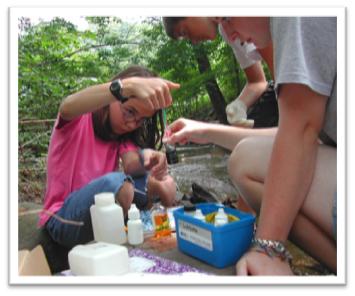
A Thorough Examination of the Elk River Chemical Spill and the Science Surrounding 4-Methylcyclohexane Methanol (4-MCHM)
In early January 2014, a significant environmental and public health emergency emerged in West Virginia when Freedom Industries released thousands of gallons of a substance known as 4-methylcyclohexane methanol (4-MCHM) into the Elk River. This incident compromised the water supply for over 300,000 residents across nine counties, triggering a state of emergency and forcing communities to seek clean water alternatives.
While the ecological and health ramifications of this event attracted widespread media attention, the relatively obscure chemical at the core of the situation, 4-MCHM, raised questions, misunderstandings, and alarm due to a scarcity of toxicological information and public awareness. In this article, we dissect what is known—and what remains unclear—about this substance, employing fundamental chemistry principles, accessible data, and logical conclusions to clarify this industrial compound.
What Is 4-MCHM?
4-Methylcyclohexane methanol (4-MCHM) is an organic compound mainly utilized in the coal sector during coal washing and processing. It emits a distinct licorice-like fragrance and is categorized as an alcohol owing to its hydroxyl (-OH) group. The term “methanol” in its designation might cause concern, but it’s crucial to understand that it is not methanol itself (a highly toxic type of alcohol), but rather a related chemical structure comprising one hydroxyl group linked to a more complex carbon skeleton.
In terms of structure, the molecule consists of a cyclohexane ring with six carbon atoms, along with a methyl group (-CH3) and a hydroxymethyl group (-CH2OH) affixed to different carbons. This configuration imparts both polar (hydrophilic) and nonpolar (hydrophobic) traits to the molecule.
Chemical Properties of 4-MCHM
– Solubility: 4-MCHM is not particularly soluble in water. The -OH group enables it to form hydrogen bonds, contributing to some degree of solubility, but the larger part of the molecule is a nonpolar hydrocarbon, making it more compatible with fats and oils than with water.
– Density: An interesting note—the compound is less dense than water and usually floats, potentially forming a slick on water surfaces when present in high concentrations.
– Color and Odor: Chemically, 4-MCHM appears as a colorless liquid, although its strong aroma can be detected at parts per billion. Some reports mentioned a greenish hue in the water, raising concerns; however, subsequent clarifications indicated this might be attributed to seasonal algae blooms rather than the chemical itself.
– Volatility and Flammability: Like many organic solvents, it is flammable, yet it has lower volatility compared to smaller, more common substances like acetone. Factors such as molecular size, weight, and polarity contribute to its relatively slow evaporation rate.
How Toxic Is 4-MCHM?
This aspect is where the complexities arise. There is scant data regarding the human health effects of 4-MCHM. Much of the existing toxicological information is extrapolated from studies on animals and general chemical properties.
Available insights:
– LD50 in Rats: Approximately 825 mg/kg body weight. In toxicology, LD50 represents the dose that kills half the members of a tested group. While this benchmark serves as a reference point for veterinary toxicologists, human responses may vary considerably.
– Environmental Effects: The no-observed-effect concentration (NOEC) for fathead minnows is 25 mg/L, indicating that elevated concentrations could be detrimental to aquatic life—particularly in concentrated, high-exposure areas. The compound will eventually degrade environmentally through the action of bacteria and sunlight, although this process is gradual.
– Carcinogenicity: No current data suggest that 4-MCHM is carcinogenic; however, the lack of evidence does not equate to safety.
How the Body Might Process It
Upon entering the body, chemical compounds undergo a sequence of absorption, distribution, metabolism, and excretion. Considering its structure:
– 4-MCHM is likely to favor fatty tissues over those rich in water because of its hydrophobic nature.
– The liver serves as the body’s primary detoxification organ. It may attempt to convert the hydroxymethyl group (-CH2OH) into a more water-soluble carboxylic acid group (-COOH), facilitating the compound’s elimination through urine.
– Unknown interactions: Like any foreign substance, 4-MCHM might bind to proteins or disrupt delicate biochemical pathways. Unfortunately, we still lack knowledge about which interactions, if any, occur.
What’s Causing the Concern?
Beyond the essential characteristics of 4-MCHM, a significant source of worry stems from the unknowns. Industrial chemicals, particularly those not designed for human or pharmaceutical use, do not undergo the thorough safety evaluations that drugs do.
Additionally:
– Purity Issues: Industrial-grade chemicals frequently contain impurities. Unlike laboratory reag